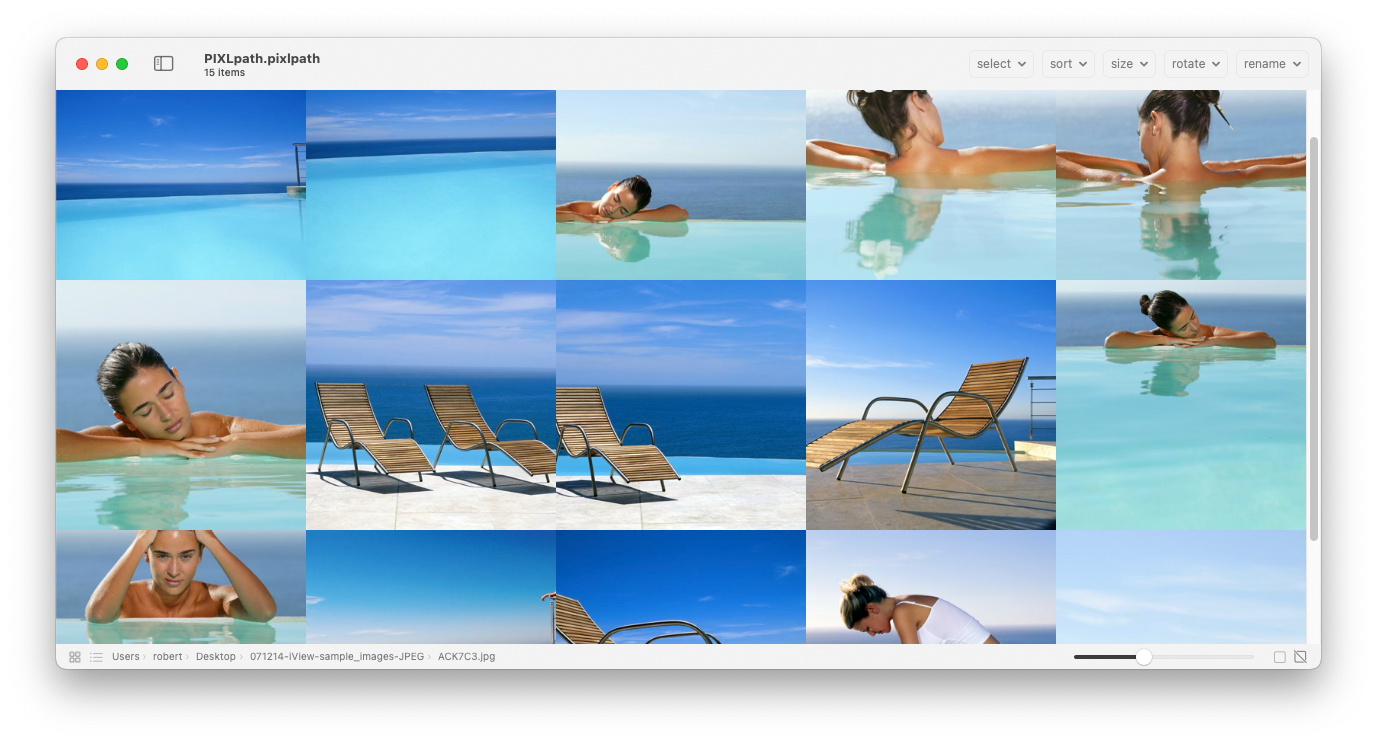Until recently I wasn’t able to recommend a simple program for managing image collections. DAM software with a clean interface that will appeal to creatives seemed to have become extinct.
A creative is anyone who makes digital art; photographer, designer, illustrator, video or music producer.
Digital Asset Management software for creatives has undergone many changes over the past two decades. DAM software at its most basic lets you index and search your artwork, be they images, videos, illustrations – anything you create and want to keep track of.
Creatives who were early adopters of DAM in the 1990s had little choice. The user interface felt more like a spreadsheet. Most single user DAM software were pared down versions of enterprise DAM. Desktop programs like Extensis Portfolio, Canto Cumulus and Fotoware FotoStation, also had a steep learning curve for beginners.
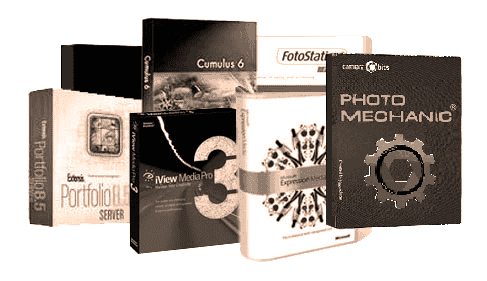
In the early 2000s iView MediaPro became the de facto DAM for creatives because it had a clean interface and was easy to start using. Simply drag a folder or hard drive onto the program icon. iView would create a visual catalog that you could scroll and search through, often revealing forgotten gems. I remember in 2008 photographer Bruce Pottinger did just that, and found an image that went on to receive a Gold Award at the Australian Professional Photography Awards.

Apple revolutionised the photography workflow when they released Aperture. For the first time photographers could sort, process and catalog their images all within one program, that had the beautiful Apple interface. Adobe followed up soon after with Lightroom, and very quickly photographers didn’t see any need for a separate DAM catalog program like iView, and it eventually died. My friend John Beardsworth called the new programs DAM+P; Digital Asset Management + Processing.
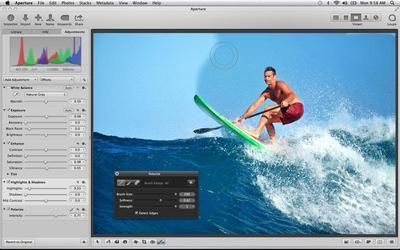
Truth be told, none of the DAM+P programs have enough DAM, and concentrate on processing. I believe there is still a need for a basic program that just does DAM, like iView did.
Enter PIXLpath. I miss many features of iView, most notably the ease and speed of cataloging a folder of images.
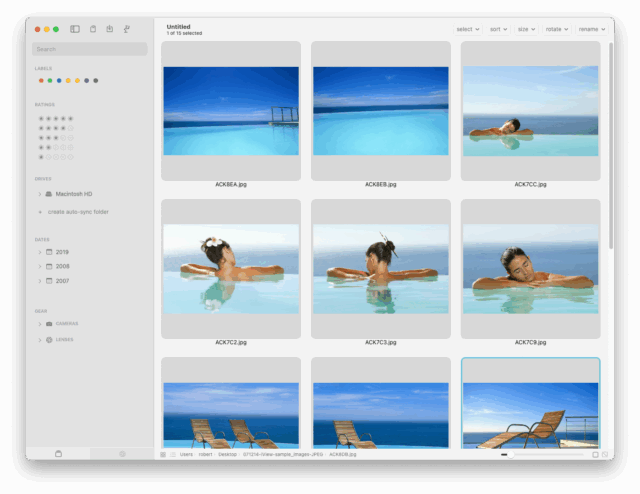
PIXLpath has a simple, clean interface that will appeal to creatives. Once again I can simply drag a folder or drive onto a program, and it creates a visual catalog.
Catalogs work across Apple devices: Mac, iPad and iPhone (sorry Windows users). This is something not even iView did! One of my current jobs will span several weeks, and thousands of images. Having access to PIXLpath catalogs on iCloud means I can easily check on previous images on my iPad or iPhone if needed.
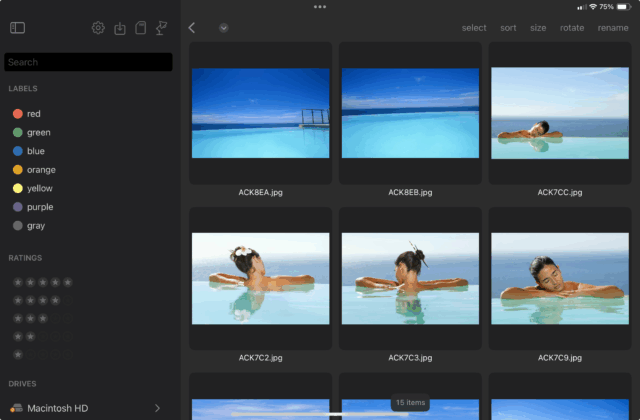
PIXLpath is developed by Chris Macke, a New York professional photographer. Like a lot of great software, Chris created PIXLpath to scratch an itch that he, and several of his colleagues, had.
For nearly 30 years I’ve worked closely with some of the biggest software companies to develop photography programs. At some stage they all add features that are cool, but have no real world use. Only when developers are photographers, professional or amateur, do practical features get introduced.
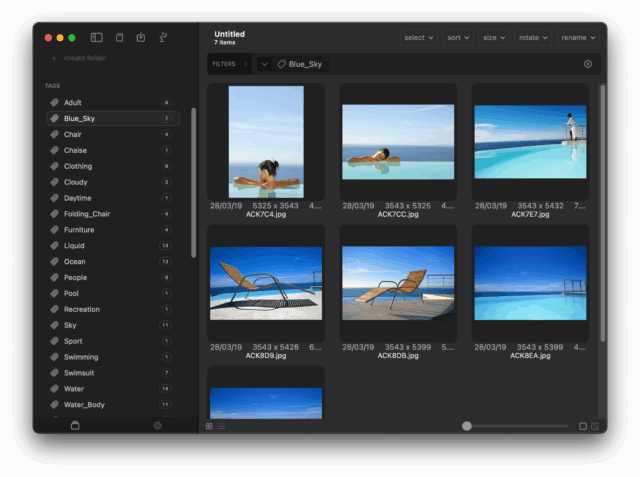
Chris is a working photographer, and a developer who listens to customers. For better or worse, PIXLpath is a single dev program. Good, because Chris can be nimble. Bad, because single developer programs risk being abandoned. That’s why my first rule of looking at DAM software is ensuring you can get your data out. To quote John Beardsworth again, he refers to it as serial monogamy. Caveat Emptor.
I still rely on Adobe Lightroom Classic to catalog for my archive of over a million images. But it’s a beast, the Lightroom catalog is over 400GB, and of course that doesn’t include the images.
My PIXLpath catalogs are per project, typically well under 100MB, and contain a few thousand images each. Every PIXLpath catalog is self contained and portable, and work fine with cloud storage, across multiple devices. They are single user catalogs, meaning they aren’t designed to be shared. However, in a pinch, you could share catalogs, as long as each user owns a copy of PIXLpath, and only one person works on the catalog at a time.

Perhaps the most surprising feature of PIXLpath is its price: US$14.99. That license includes all platforms: Mac, iPad, iPhone and Vision Pro. No, it’s not a subscription price either, that’s a one-time purchase.
PIXLpath is the closest software I’ve seen that comes close to the early version of iView. Chris said many people tell him that. If you miss iView, or think there may be an award winning image hidden in your trove of images, I recommend giving PIXLpath a go. For the price you really can’t go wrong.
